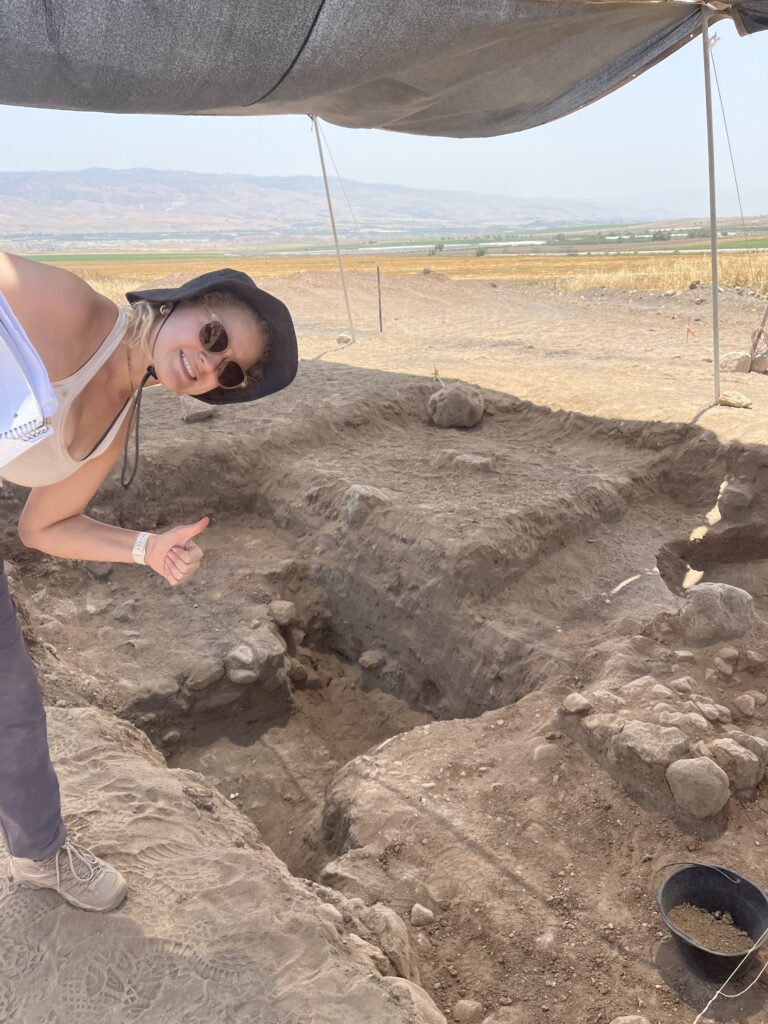
By Alexandra McLaughlin ’16
Two students are enhancing Macalester’s archaeology curriculum through summer research on new technologies and hands-on opportunities in the Twin Cities and on campus.

“There are plenty of ways to expand hands-on opportunities for archaeology students at Mac,” Wray-Raabolle said.
This summer, Anna Runquist ’25 (St. Paul) and Verity Wray-Raabolle ’25 (Owatonna, Minn.) are expanding Macalester’s archaeology curriculum through research in the Twin Cities and on campus. Their work, funded by the Summer Research Fellowship in Archaeology from the Classical Mediterranean and Middle East Department, focuses on biological archaeology and digital archaeology.
Runquist emphasized the importance of leveraging existing campus resources, such as Macalester’s Digital Resource Center.
“Their willingness to collaborate on projects and meet with students has been greatly appreciated,” she said.
The center has helped students 3D print replicants of artifacts, digitally map archaeological sites, and visualize what it means to excavate in today’s digital age.
“Familiarizing students with programs such as ArcGIS and 3D printing workspaces is a great start to expanding the archaeology curriculum while remaining centered in the Mac community,” Runquist said.
The students are collaborating with other departments to learn about photogrammetry, geological phenomena, and various imaging and reconstruction techniques.
“There are plenty of ways to expand hands-on opportunities for archaeology students at Mac,” Wray-Raabolle said.
Beyond campus, they are connecting with Twin Cities professionals and businesses, visiting the Midwest Art Conservation Center, labs at the University of Minnesota, and the 106 Group, a cultural resource management firm in St. Paul. These visits aim to explore potential collaborations and learn about new technologies in the field.
Runquist’s previous experience in zooarchaeology, gained during an internship in Paris at l’Institut de Paléontologie Humaine, has been particularly relevant.
“I learned that research in biological anthropology and archaeology involving humans and animals was a great fit for me,” she said. “It gave me a new perspective on what the classical archaeology track at Mac could look like in the future.”
Both students have archaeological fieldwork experience, noted Professor Andrew Overman.
“Their excavation last summer prepared them for this research and to think creatively and innovatively about the future of the archaeological curriculum at leading colleges and universities,” he said.
Through this fellowship, Runquist aims to provide students interested in archaeology—and related fields such as anthropology, art history, geology, and geography—with an extensive list of community resources to contact regarding fieldwork, post-graduation steps, and professional connections.
She encourages students to connect with professors who share their research interests. “Chat with them about what a summer research project could look like and just go for it,” she said.
Wray-Raabolle echoed this sentiment. “Anna and I have had the opportunity to mold this research according to our interests, taking it in directions that made the most sense to us,” she said. “It’s different from a class in that way. You have the freedom to explore beyond the usual bounds.”
September 11 2024
Back to top




